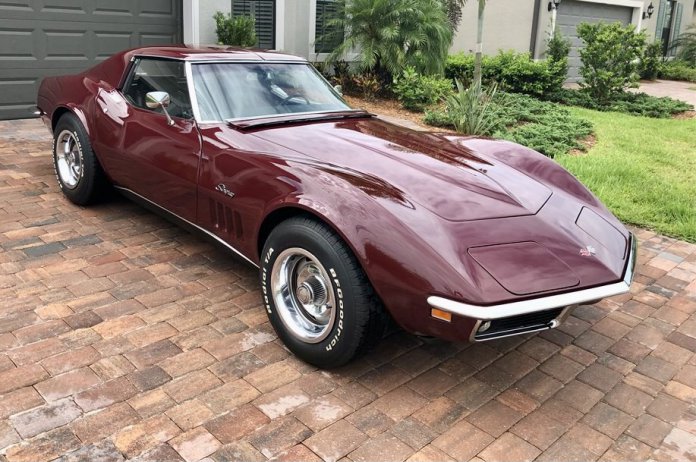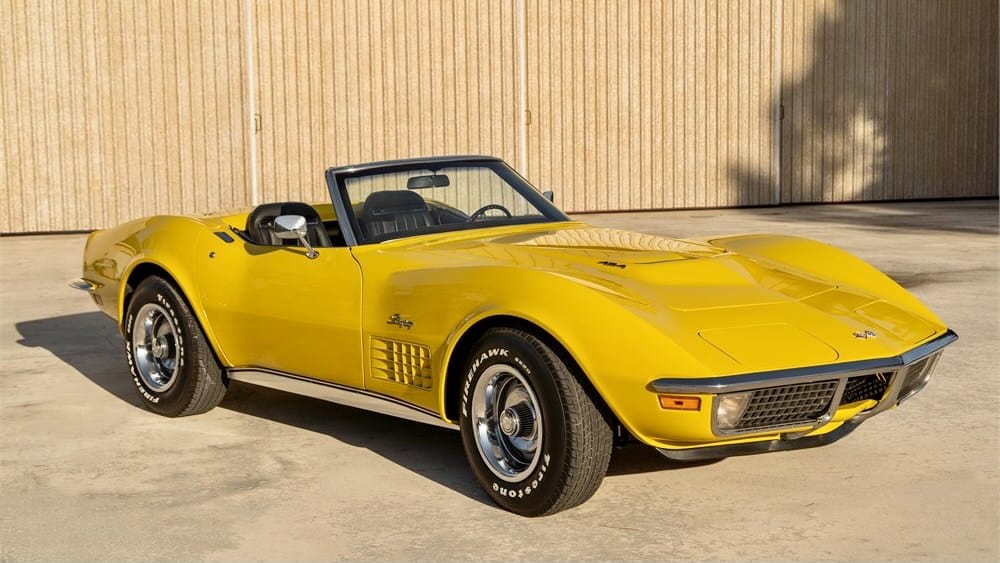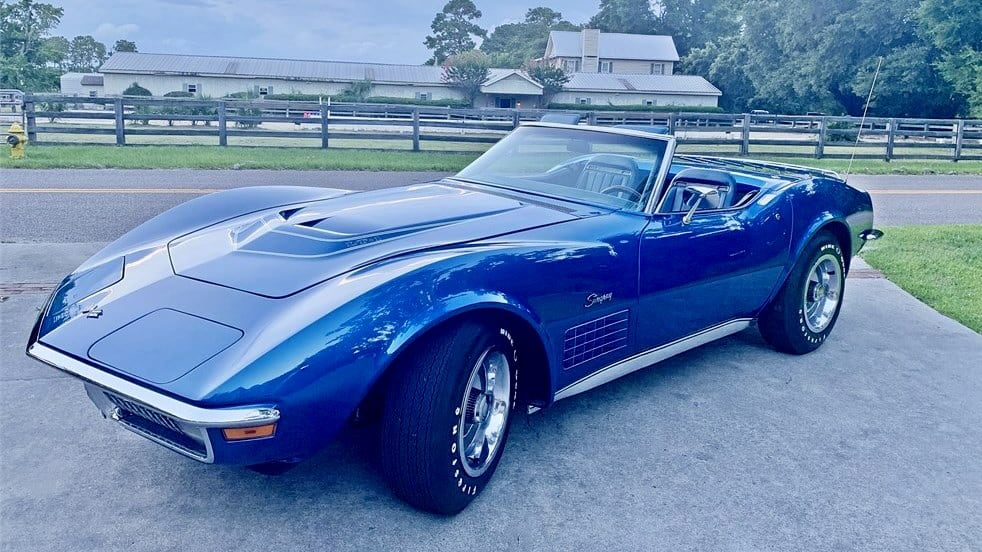(Editor’s note: During the month of September, we’re publishing a series of articles about selling a collector car. Today, Andy Reid writes about setting a value for your car.)
The collector car market over the last 18 or so months has been quite hot and, as a result, you may have been looking at the results of online and live collector car auctions and have decided that the time has come to sell one of your beloved collector cars.
You see the prices of cars “just like yours” selling for much more than you thought they might and have decided that you would like to cash in.
This can be a great idea, as it can either get you into the next collector car you’ve been eying, or can provide some ready cash to finally build that garage addition you have been planning for years.
The big question is: What is your car worth?
The mistake many make is that they base their asking price on emotion. They love their car and have seen examples of the same year, make and model sell for serious money, so their car must be worth the same amount, right?
In some cases that might be true. However, it is more likely that the car seen sell for big money, say a 1967 Austin-Healey 3000 at $120,000, or a 1966 Ford Mustang that sold for $225,000, might not be just like your car. The Healey could be a fresh 100-point award-winning restoration. Does yours fit that description? The Mustang looks just like your GT, except it is a 1966 Shelby GT350H.
Get the idea? Keeping this in mind, it is better to take a more clinical and scientific approach to what your car really is to determine its value to its next owner.
The first thing to do when evaluating what your car might be worth is to carefully evaluate its condition. How do you do this? The first tool you need is to have a good understanding of what used condition numbers mean. I evaluate a few hundred cars a year at auctions, concours and shows and I go by the Hagerty Price Guide definitions.
According to the Hagerty valuation tool, the condition of a car can be broken down into 4 levels.
Number 1 condition cars “are the best in the world. The visual image is of the best vehicle, in the right colors, driving onto the lawn at the finest concours. Perfectly clean, the vehicle has been groomed down to the tire treads. Painted and chromed surfaces are mirror-like. Dust and dirt are banned, and materials used are correct and superbly fitted. The one-word description for #1 vehicles is ‘concours’.”
Number 2 vehicles “could win a local or regional show. They can be former #1 vehicles that have been driven or have aged. Seasoned observers will have to look closely for flaws but will be able to find some not seen by the general public. The paint, chrome, glass and finishes will all appear as excellent. No excessive smoke will be seen on startup, no unusual noises will emanate from the engine. The vehicle will drive as a new vehicle of its era would. The one-word description for #2 vehicles is ‘excellent’.”
Which brings us to No. 3 cars, which “could possess some, but not all of the issues of a #4 vehicle, but they will be balanced by other factors such as a fresh paint job or a new, correct interior where applicable. #3 vehicles drive and run well but might have some incorrect parts. These vehicles are not used for daily transportation but are ready for a long tour without excuses, and the casual passerby will not find any visual flaws. ‘Good’ is the one-word description of a #3 vehicle.”
And what of the No. 4-condition vehicles? They “are daily drivers, with flaws visible to the naked eye. The chrome might have pitting or scratches, the windshield might be chipped. Paintwork is imperfect, and perhaps the body has a minor dent. Split seams or a cracked dash, where applicable, might be present. No major parts are missing, but the wheels could differ from the originals, or other non-stock additions might be present. A #4 vehicle can also be a deteriorated restoration. ‘Fair’ is the one word that describes a #4 vehicle.”
So how much difference does condition make in pricing?
For example, a 1966 Ford Mustang GT 2-door coupe with a 298cid V8 and 4-barrel carburetor in No. 1 condition is valued at $57,000. A No. 2 car drops to $43,700, a 3 to $27,700 and a 4 to $14,800.
Or consider a ’67 Austin-Healey 3000 BJ8 Phase 2, a No. 1 car is $116,000, a No. 2 checks in at $75,400 and a No. 3 at $46,300.
So how do you know how good the car you have is? If you have been around the hobby a long time this should be easy as you are likely to have shown it the same at either regional or national shows and concours events and you can tell by where you finished at those shows.
And be honest with yourself when setting your car’s value and asking price. Unless your car is ready for Amelia Island or Pebble Beach, it is not likely a No. 1-condition car.
Don’t want to do all this work yourself? You can consider hiring a vehicle appraiser. If you do, be sure to hire a certified collector car specialist.
More is involved than cosmetics. A No. 1 car works correctly mechanically and in the exact way it was built when new. Unless it is a resto-mod or hot rod build, modifications from factory original are not something you find in a No. 1-condition car.
As a general rule, nicely presented cars for sale at most auctions, whether online or live, tend to be either No. 2 or No. 3 condition vehicles. Keep this in mind when deciding on the value of your car.
There are some other things that can drastically affect the value of your car, and in a positive way.
* Is your car completely original, including paintwork with only service items changed? If so and if the car is very well preserved, this fact will move the value of your car upward, sometimes higher than a restored car in No. 1 condition. The saying is true: It’s only original once.
* What is the car’s history? Are you the original owner? Was your dad or mom the original owner? Does the car have any special history such as celebrity ownership or racing history?
A good example of this is the Shelby GT350 that racer Stirling Moss owned and drove. This single fact will make the value of that car much high than a similar car without such history.
* Do you have any documentation for the car, such as service records, the original bill of sale, and invoices or a factory build sheet? Such things as Ferrari Classiche Certified or a Porsche Porsche Certificate of Authenticity or, better yet, a CARDEX will make your car more valuable.
Also, has it won at a single-marque show or an NCRS award from the Corvette restorers? These all affect value and boost the car’s price.
* Finally, does your car have rare options or factory accessories such as LAT parts on a Sunbeam Tiger or some of the rarer options you might see on a Corvettes? Sometimes a single option code, such as the 1963 L84 corvette fuel injection option, can change a car’s value by more than $60,000.
After you go through these steps and decide what your car is and what it is not, look for recent sales that most closely match your exact car. Next, check those against a valuation tool and you should have a good idea of what you may be able to get for your car.
You might ask if all that work is really necessary? Well, you might find after all your research that you are not willing to sell your car for what it is worth. On the other side of the coin, you may find that the car in your garage is worth considerably more than you thought.
An accurate assessment also saves you time after you make that determination. Value your vehicle too highly and you aren’t likely to hear from any potential buyers. But price is properly and folks might be bidding against each other to be the next owner of your car.
Information is a powerful tool to have in our hobby, and the more have about your car and your value, the better off you’ll be, whether you sell the car or decide to keep and enjoy it yourself.
A footnote on the three Corvettes pictured above
The 1969 coupe was restored and has a replacement engine. The yellow 1971 convertible has its original LS5 V8 engine and 4-speed manual transmission. The blue 1971 convertible is an 18,000-mile car with its original engine and 4-speed gearbox.








i have 2- 79 Fords one a F-100 & the other F-350 With a 440 Holmes Wrecker Bed Both have 300 6 Cylinder Engines with the Bulldog 4 Speed Transmissions Wrecker would be the easiest to restore ! Both ran when Parked ,
My name is Dave and I own a 1965 Plymouth Fury lll convertible It has a 318 V8 with a 3 speed transmission It has new paint new top new tires new boot power steering and power top It has 114 k miles but drives great